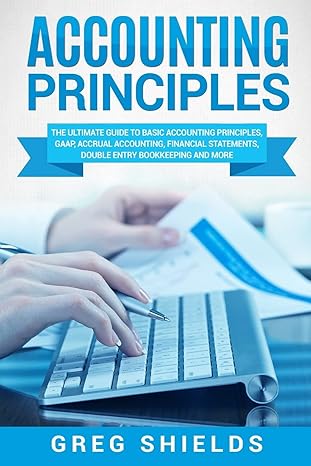Answered step by step
Verified Expert Solution
Question
1 Approved Answer
DALLAS Company produces and sells a single product and had an overall manufacturing variance of $36,460 reported last period. The standard cost card for the
DALLAS Company produces and sells a single product and had an overall manufacturing variance of $36,460 reported last period. The standard cost card for the product follows: Standard Cost Card-Per Unit Direct materials, 4 metres at $3.60 per metre $ 14.40 Direct labour, 1.4 direct labour-hours at $15.0 per direct labour-hour Variable O/H, 1.4 direct labour-hours at $2.6 per direct labour-hour Fixed overhead, 1.4 direct labour-hours at $6 per direct labour-hour 21.00 3.64 8.40 Standard cost per unit $ 47.44 The following additional information is available for the year just completed: a. The company manufactured 31,000 units of product during the year. b. A total of 123,000 metres of material was purchased during the year at a cost of $3.65 per metre. All of this material was used to manufacture the 31,000 units. There were no beginning or ending inventories for the year. a. The company manufactured 31,000 units of product during the year. b. A total of 123,000 metres of material was purchased during the year at a cost of $3.65 per metre. All of this material was used to manufacture the 31,000 units. There were no beginning or ending inventories for the year. c. The company worked 45,500 direct labour-hours during the year at a cost of $14.80 per hour. d. Overhead cost is applied to products on the basis of standard direct labour-hours. Data relating to manufacturing overhead costs follow: Denominator activity level (direct labour-hours) 44,400 Budgeted fixed overhead costs (from the flexible budget) $266,400 Actual fixed overhead costs Actual variable overhead costs $265,250 $119,500 Required: 1. Compute the direct materials price and quantity variances for the year. 2. Compute the direct labour rate and efficiency variances for the year. L Compute the direct materials price and quantity variances for the year. 2. Compute the direct labour rate and efficiency variances for the year. 3. For manufacturing overhead, compute the following: a. The variable overhead spending and efficiency variances for the year. b. The fixed overhead budget and volume variances for the year. 4. Compute the total variance. Complete the following table, followed by all calculations Indicate the effect of each variance with "F" for favorable, 'U' for unfavorable Marks Direct materials variances Price variance 2 Quantity variance 2 Direct labour variances Rate variance: Efficiency variance Vorioble manufacturing overhead variances 2 2 2 2 2 2 Direct materiais variances Price variance Quantity variance Direct labour variances Rate variance Efficiency variance Variable manufacturing overhead variances Spending variance Efficiency variance Fixed manufacturing overhead variances Budget variance Volume variance Total of variances 2 2
Step by Step Solution
There are 3 Steps involved in it
Step: 1

Get Instant Access to Expert-Tailored Solutions
See step-by-step solutions with expert insights and AI powered tools for academic success
Step: 2

Step: 3

Ace Your Homework with AI
Get the answers you need in no time with our AI-driven, step-by-step assistance
Get Started


